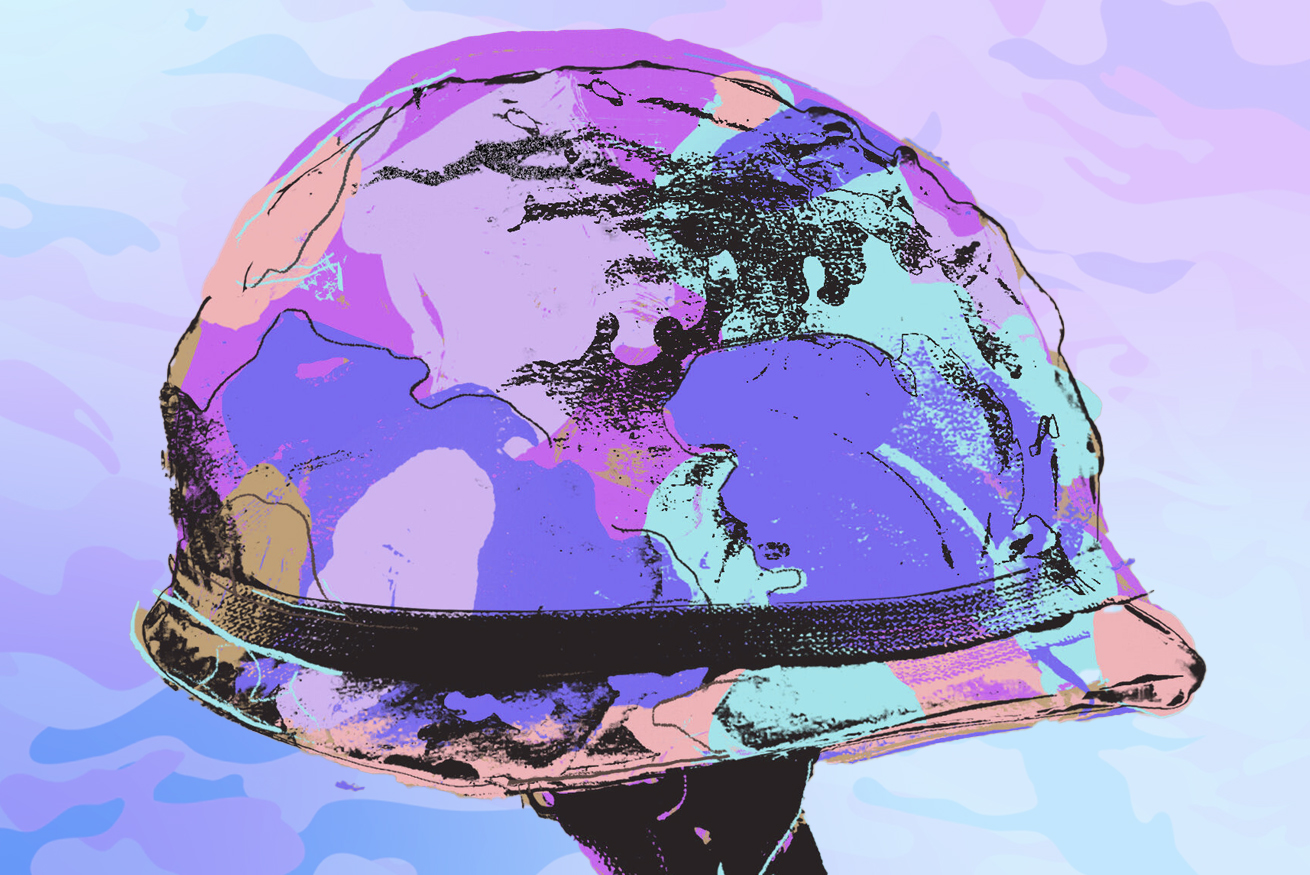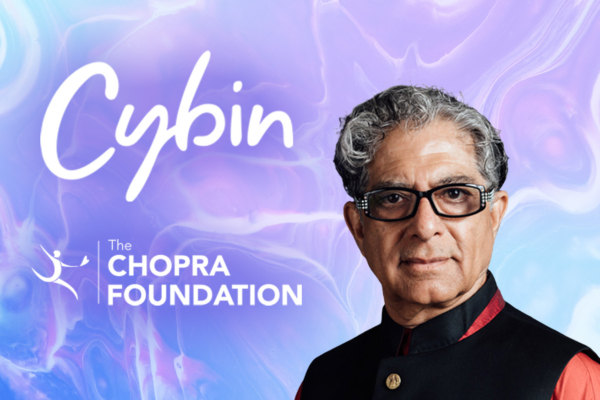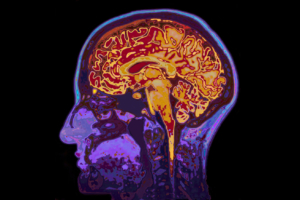
Marine corporal Craig Schroeder served in Iraq in the “Triangle of Death.” One day, a makeshift bomb left him with traumatic brain injury, broken foot and ankle, and a herniated disc. In addition to hearing and memory loss, he is one of many veterans with chronic pain.
Veterans are the tip of the spear when it comes to chronic pain, opioid dependence, and overdose deaths. But they’re also at the forefront of new research showing psychedelics may treat chronic pain more effectively than opioids, without the risk of dependence or overdose.
Combat and chronic pain
Nearly half of veterans who see combat come back with chronic pain. In one survey, nearly half of veterans with chronic pain had suffered for at least a year, and more than half were in pain constantly or daily. By contrast, 26% of the general population suffers from chronic pain. More than half of these veterans rated their chronic pain as moderate or severe.
Over the past ten years of the most recent psychedelic renaissance, VA hospitals have been epicenters of randomized, controlled trials on using psychedelics to treat conditions like PTSD, anxiety, and depression. First, because veterans are more likely to suffer from these conditions. Second, because VA hospitals provide controlled environments which are in many ways ideally suited to running these types of trials.
Thanks to these studies, we have fairly robust preliminary data on the effectiveness and safety of using psychedelics to treat psychiatric problems such as PTSD, anxiety, depression, alcohol dependence, and more.
When it comes to chronic pain, the evidence is thinner, and more preliminary. Researchers are still very much in early stages. But the evidence that’s coming out is promising. And with so many studies in the pipeline, we should know a lot more before long.
“It increasingly seems that pain –one of the most universal experiences in the human condition– is now the next frontier for psychedelics after mental health,” VICE reports.
People are finding healing with psychedelics
In 2021 the New York Times profiled Jose Martinez, a former Army gunner who was injured in Afghanistan. After 19 surgeries, his chronic, debilitating pain left him dependent on opioids. Then he tried psilocybin. He’s since become an effective psychedelics evangelist.
“Psychedelics helped me realize that my problems are small compared to the world’s bigger problems like starvation and cancer,” Martinez said. “Now I understand what I’m actually here for in this world, which is to make people smile and to remind them that life can be beautiful even when it’s not so easy.”
He’s still in chronic pain. But today he’s a Paralympic surfer, an archer, and a weight-training enthusiast. He also runs a nonprofit that seeks to connect veterans to nature through wilderness outings.
Martinez is far from alone in using psychedelics to effectively treat chronic pain. In fact, individual experimentation helped launch UC San Diego’s Psychedelics and Health Research Initiative (PHRI).
In 2016, Qualcomm Institute research scientist and National Geographic Explorer Albert Yu-Min Lin lost his lower leg in an accident in the desert. Lin soon began experiencing debilitating phantom-limb pain. A single session with psilocybin gave Lin immediate, persistent, and profound pain reduction. “Freeing myself of the pain gave me back my life,” says Lin, who is the director of the Center for Human Frontiers based at the Qualcomm Institute.
VICE reports that “thousands of people” have treated physical pain with psilocybin.
The research on psychedelics and chronic pain
Research on using psychedelics to treat pain actually goes back to 1964 when Anesthesiologist Eric Kast gave 50 “gravely ill” patients with pain from everything from cancer to gangrene 100 micrograms of LSD and compared their pain response to synthetic opioids Dilaudid and Demerol. “When compared with LSD-25, both [other] drugs fell short in their analgesic action,” Kast wrote.
At UC San Diego, Mark Geyer, Distinguished Professor of Psychiatry and Neurosciences Emeritus and founding member of the PHRI, has studied the behavioral and neurobiological effects of psychedelics such as LSD, DMT, mescaline and psilocybin, for more the past 40 years. He helped launch the Heffter Research Institute in 1993, which is dedicated to renewing research into beneficial uses of psychedelics. Researchers in Japan also studied using LSD for phantom-limb sufferers in the 1970s with “small but suggestive” results.
But for the most part, the War on Drugs and stigma stymied attempts to study psychedelics in the US until recently.
In 2020 researchers at the Netherlands’ Maastricht University and their colleagues published one of the few double-blind, randomized, placebo-controlled studies on psychedelics and physical pain in the Journal of Psychopharmacology. They found people on LSD, even at a low dose, kept their hands submerged in almost-freezing water nearly as long as people who’d taken opioids oxycodone and morphine in previous studies. The authors concluded: “Low doses of LSD might constitute a novel pharmacological therapy.”
A 2021 study showed people with chronic pain reported substantially improved pain scores during and after psychedelic experiences. A 2021 study on migraine sufferers found patients who took even a single dose of psilocybin reported a “significant” reduction in their migraine during the test period compared with those who took a placebo.
Yale University announced a trial using psilocybin to treat cluster headaches in 2021. In August 2021, Beckley Psytech raised $80 million for psychedelic research to fund, among other things, a phase 1b safety trial looking into using low-dose psilocybin to treat short-lasting unilateral neuralgiform headache attacks, a rare kind of headache. In May 2021 multimillion-dollar psychedelic start-up Mind Medicine (MindMed) announced a study series, Project Angie, on whether LSD and an undisclosed drug can treat chronic pain.
Based on the preliminary evidence and anecdotal reports, a growing number of researchers are investigating whether psychedelics can help ease physical pain in dozens of emerging trials.
A University of California San Francisco study will look at whether psilocybin therapy is effective for people with chronic low back pain. “This study examines the effects of a single dose of psilocybin in combination with therapeutic preparation and integration studies,” the university notes. “We hope psilocybin therapy will lead to improvements in pain interference…related to chronic back pain.” The study will take place at The Translational Psychedelic Research (TrPR) Program at UCSF.
Tryp Therapeutics is studying whether psilocybin and another, psilocybin-based drug with an undisclosed formulation that is obliquely called TRP-8803 can relieve chronic pain. Tryp has partnered with the University of Michigan to study how these drugs might treat fibromyalgia, which causes chronic pain.
The drawbacks to conventional treatments
A lot of what makes potentially using psychedelics to effectively treat chronic pain so exciting is that opioids are currently the most effective and commonly used legal treatments available for chronic pain.
In one study, doctors prescribed opioids to about two thirds of veterans with chronic pain over a one-year period. Doctors prescribed opioids on a long-term basis to at least one-third. In one survey of more than 2500 soldiers from one infantry brigade three months after return from Afghanistan found that 15% had used opioids in the past month, compared with 4% of the general population.
While opioids are extremely safe when used as prescribed, they carry significant risks of dependence and overdose. In 2020 opioids caused or contributed to 68,630 overdose deaths in the US, according to the CDC.
The vast majority of instances of opioid addiction and overdose deaths result directly or indirectly from the War on Drugs. The DEA currently severely limits access to well-studied, effective treatments for opioid dependence. And it contributes significantly to an epidemic of undertreatment for chronic pain, which leads sufferers to turn to black market alternatives like heroin and fentanyl.
Veterans are hardly exempt from undertreatment for chronic pain. Chronic pain sufferers who can’t get their medication experience withdrawal symptoms that “feel like a panic attack and the flu at the same time,” according to the Washington Post. Thanks to the DEA, men and women who lost limbs serving in Iraq and Afghanistan are needlessly entering withdrawal. After the DEA rules changed, Schroeder’s VA doctor couldn’t see him for nearly five months. This isn’t unusual. Schroeder spent those months bedridden in crippling pain and opioid withdrawal. Another Iraq vet can’t drive due to shrapnel in his femur and pelvis. Getting his medications requires a monthly two-hour bus ride for “a one-minute consult.”
Undertreatment leads many to seek treatment outside the medical establishment or take their own lives. In an unpublished paper, Dr. Harvey L. Rose told the story of a 28-year-old man with persistent leg pain caused by a work accident that lumbar disc surgery couldn’t fix. Rose also treated a 78-year-old woman left with chronic back pain after surgery for degenerative cervical disk disease didn’t work. Dr. Rose’s 28-year-old patient turned to alcohol and street drugs after his doctor prescribed an antidepressant instead of a painkiller. He later hanged himself in his garage. The 78-year-old woman climbed into her bathtub with an electric mixer after a series of physicians refused to prescribe an effective dose of painkillers. She tried to kill herself four times, slashing her wrists and overdosing on Valium and heart medication.
Most young heroin addicts entering treatment had previously been on prescription painkillers, according to a 2014 JAMA Psychiatry study. More than 90% started using heroin because it was cheaper and easier to get.
Again, these problems hit veterans especially hard. Veterans are nearly twice as likely to suffer an overdose versus the rest of the population and are significantly more likely to commit suicide.
The potential benefits of psychedelics
Unlike opioids, psychedelics aren’t addictive and are extremely difficult to fatally overdose on.
“Psychedelic substances have a generally favourable safety profile, especially when compared with opioid analgesics,” reads a review paper in a 2020 British Medical Journal publication. Psilocybin may pose cardiovascular risks, but so far only in cases of chronic, heavy use.
The other problem with conventional treatments for chronic pain is that they’re not always effective.
Lin first availed himself of the state-of-the-art treatment for phantom limb pain, Mirror Visual Feedback overseen by the authority on the topic, V.S. Ramachandran. But it provided temporary relief. “When the mirror was removed the pain came rushing back, as if my mind just wouldn’t let it go,” Lin said.
“Neuropathic pain conditions such as phantom limb pain are often difficult to treat,” says UC San Diego PHRI member Timothy Furnish, associate clinical professor of anesthesiology and pain medicine. “The possibility that psychedelics could reorganize pain pathways in the brain holds out the promise of a much more long-lasting treatment than current medication can offer.”
“The response rate to the current treatments is very low,” James Close told VICE. Close is a doctoral student at the Centre for Psychedelic Research at Imperial College London and pain management therapist at Imperial College Healthcare NHS Trust. Opioids can alleviate pain while patients take them. But as soon as the drugs wear off, the chronic pain returns.
Anecdotal and preliminary empirical research shows psychedelics may relieve pain over the long-term. “Psychedelics could create plasticity and, so to speak, allow for the slate to be wiped clean,” says Close. “Looking at the depression and PTSD studies, you can see quite conceivably how psychedelics might help people change the relationship they have with their chronic pain.”
Indeed, preliminary findings from the PHRI indicate that psychedelics can significantly, meaningfully, and perhaps even permanently reduce chronic pain caused by conditions like cluster headaches, complex regional pain disorder, phantom-limb pain, tinnitus, and more.
“As a non-addictive alternative to opioids, psychedelics represent a revolutionary and much-needed new approach to the treatment of pain,” according to the PHRI at UC San Diego.
The CDC estimates that more than 100 million people in the United States experience chronic pain. A quarter of people seeking primary health care suffer from chronic pain. Chronic pain is a leading cause of disability. A quarter of people seeking primary health care suffer from chronic pain.
Going forward
Chronic pain is a huge and growing problem in the United States. Unfortunately, the legal treatments currently available to sufferers are not only often inadequate, but carry significant risks of dependence. The Drug War has created an opioid epidemic, caused by an undertreatment epidemic which pushes people suffering from chronic pain toward dangerous street drugs or even worse solutions.
Veterans are disproportionately impacted by both chronic pain and the overdoses and suicides related to undertreatment.
Research indicates psychedelics may actually work better than conventional treatments, without as many risks. It’s incumbent on the federal government to remove the barriers to research and treatment so that we can help ensure no one has to suffer needlessly or take unnecessary risks.





